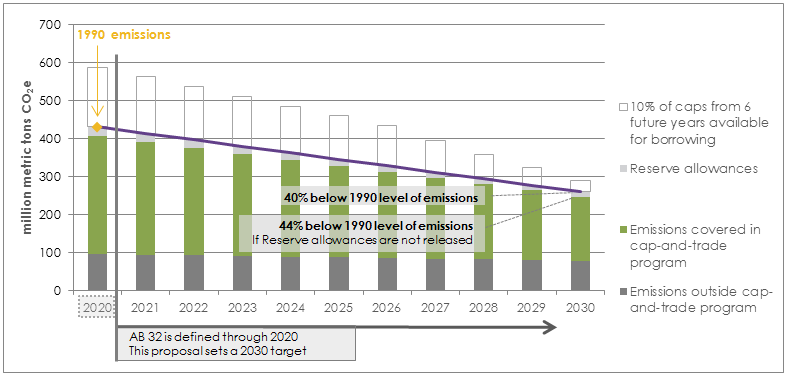(San Francisco, CA) – Research from Energy Innovation finds that the greenhouse gas emissions targets announced by California Governor Jerry Brown in today’s Executive Order – calling for California to achieve carbon emission reductions 40% below the 1990 level by 2030 – are not only technically achievable, but economically sensible and consistent with reductions called for by climate change science.
“With this step, California has once again shown it can lead not only America, but the world, toward decarbonized prosperity,” said Hal Harvey, Energy Innovation CEO. “Today’s executive order is another step toward a safe climate future, and further proof that environmental quality can go hand-in-hand with economic health.”
California has proven that economic health and emissions reductions can be achieved together since the California Global Warming Solutions Act (AB 32) was adopted in 2006. In the years since, the Golden State’s emissions have fallen by 6% while the economy has expanded by 9%.
In March, Energy Innovation released a report recommending the same target Governor Brown announced today. The report, Charting California’s Carbon Course, goes beyond the topic of target setting and takes on the question of how to achieve this goal, developing a blueprint for getting there that builds on California’s current cap-and-trade policy.
The following chart depicts Energy Innovation’s proposed emissions pathway to 2030

“This new announcement provides greater certainty that California’s cap-and-trade program will be extended beyond 2020, and will bolster carbon allowances prices, which have been selling near the minimum price (the “price floor”) at which the state offers them at auction,” said Chris Busch, Energy Innovation Director of Research. “Our analysis of emissions trends and cap levels shows reductions at the necessary scale through 2020 and beyond to 2030 are affordable, and expects prices will remain closer to the price floor than to the price level that would trigger release of permits from the ‘allowance price containment reserve’ cost containment mechanism California has created to ensure permit prices do not rise too high.”
**The official Press Release document can be found here.**
